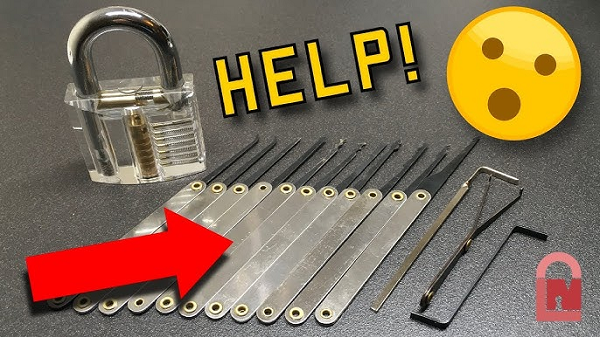Mastering the Art of Lock Picking: Techniques for Everyone
2024-09-21 13:35
Lock picking is an art that combines dexterity, patience, and a deep understanding of how locks function. While lock picking can conjure images of thieves in movies or espionage, it is also a legitimate skill practiced by locksmiths and hobbyists alike. This article delves into three common lock-picking techniques: single pin picking, raking, and impact picking, examining their mechanisms and applications.
.jpg)
1. Single Pin Picking
Single pin picking (SPP) is one of the most fundamental and widely recognized lock picking techniques. This method involves manipulating each pin in the lock individually until they align at the shear line, allowing the lock to turn.
How It Works
Pin tumbler locks consist of multiple pins stacked in pairs—each pin has a different length. The goal in SPP is to use a tension wrench and a pick to raise each pin to its correct height.
Steps Involved
- Insert Tension Wrench: The first step is to insert a tension wrench into the lower part of the keyway, applying slight pressure in the direction you would turn the key. This tension creates a “false set” in the lock, where the pins are held in place.
- Use the Pick: Next, a pick is inserted into the keyway to feel for the pins. As you manipulate the pick, you will notice feedback from the pins.
- Raise Pins Individually: Begin by gently lifting the first pin until you feel a click, indicating that it has reached the shear line. Maintain tension on the wrench to keep the other pins from dropping.
- Repeat for Remaining Pins: Continue this process for each pin, carefully lifting them until all are set, and the lock can turn.
Advantages and Challenges
SPP is often considered a more delicate method, requiring patience and precision. It offers a high degree of control, making it a favorite among locksmiths. However, mastering this technique can take time, as the feedback from the pins can vary significantly between locks.
2. Raking
.jpg)
Raking is a quicker and more aggressive lock picking technique that allows the picker to manipulate multiple pins simultaneously. This method is often favored for its speed but requires a certain level of skill and experience to execute effectively.
How It Works
The rake tool, typically made of a thin, flexible metal with various notches or ridges, is used to jiggle the pins inside the lock.
Steps Involved
- Insert Tension Wrench: Just like in SPP, start by inserting a tension wrench to apply pressure in the direction the lock turns.
- Insert the Rake Tool: Choose an appropriate rake tool and insert it into the lock above the tension wrench.
- Rake the Pins: Move the rake tool in and out of the lock while simultaneously turning the tension wrench. The idea is to apply quick, light movements that can cause the pins to jump and hopefully align at the shear line.
- Listen and Feel for Feedback: Pay attention to the feedback from the lock. If you feel a slight give, you may have aligned some pins and can attempt to turn the lock.
Advantages and Challenges
Raking is significantly faster than single pin picking, often taking mere seconds to unlock a pin tumbler lock. However, it can also be less reliable. Raking works well on low-security locks but can be ineffective against higher-quality locks designed to resist such techniques. Moreover, raking can sometimes damage the lock if done incorrectly, making it essential to practice on non-essential locks.
3. Impact Picking

Impact picking is a specialized technique that involves using a specially designed key, known as an impact key, to momentarily align the pins. This method capitalizes on the principles of physics, utilizing a sudden force to manipulate the lock's internal components.
How It Works
The impact key is designed to fit into the lock and is struck with a quick motion, causing the pins to jump momentarily into position.
Steps Involved
- Insert the Impact Key: Place the impact key into the lock’s keyway.
- Apply Tension: Just as with SPP and raking, apply tension in the direction of the turn using a tension wrench.
- Strike the Key: Using a tool or your hand, give the key a sharp tap or strike. The sudden force can cause the pins to move and align momentarily, allowing the lock to turn.
- Turn the Lock: If successful, you can now turn the lock and gain access.
Advantages and Challenges
Impact picking is a fast method and can work on a variety of locks. However, it requires a specific key, and not all locks are suitable for this technique. The technique may also not be as reliable as others, particularly with locks designed for high security.
Conclusion
Lock Picking is a skill that can come in handy in a variety of legal situations, from lock picking to personal interests. Learn the common techniques of single pin picking, raking and impact picking, and purchase Beginner Lock Pick Sets to gain a deep understanding of lock mechanics and effectively operate lock picking skills. While legality and ethics should always be respected in practice, mastering these techniques can make an individual useful in a variety of situations and promote a deeper understanding of security systems.
Conclusion
Lock Picking is a skill that can come in handy in a variety of legal situations, from lock picking to personal interests. Learn the common techniques of single pin picking, raking and impact picking, and purchase Beginner Lock Pick Sets to gain a deep understanding of lock mechanics and effectively operate lock picking skills. While legality and ethics should always be respected in practice, mastering these techniques can make an individual useful in a variety of situations and promote a deeper understanding of security systems.

 Like Us on Facebook to enjoy 5% discount
Like Us on Facebook to enjoy 5% discount